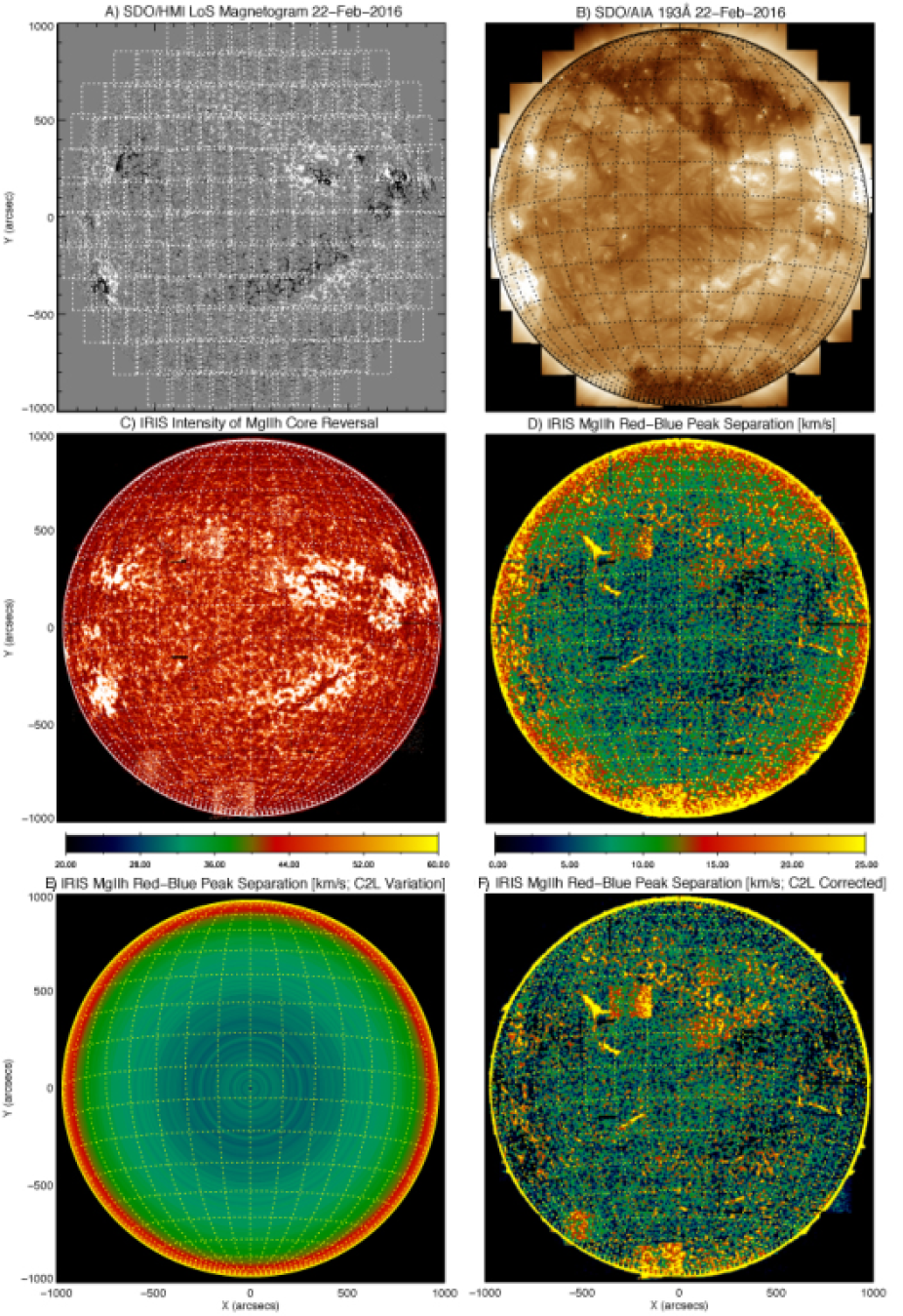Publication: ApJL; Authors: Paul Bryans, Scott McIntosh, David Brooks, Bart De Pontieu
Coronal Holes present the source of the fast solar wind. However, the fast solar wind is not unimodal—there are discrete, but subtle, compositional, velocity, and density structures that differentiate different coronal holes as well as wind streams that originate within one coronal hole. In this Letter we exploit full-disk observational “mosaics” performed by the Interface Region Imaging Spectrograph (IRIS) spacecraft to demonstrate that significant spectral contrast exists within the chromospheric plasma of coronal holes.

SDO and IRIS full-disk observations from 2016 Feb 22. The HMI and AIA Frankenmaps (panels A and B) are constructed of sub-images with the same fields of view and timing of the IRIS rasters that comprise the mosaic. The CHs in the northern hemisphere and at the south pole are most evident in the AIA intensity image (B), but not in Mg II intensity (C). The CHs are evident, however, in the Mg II peak separation map (D). After removing the center-to-limb variation, this is even clearer (F).
The spectral contrast seen delineates topological differences within the globally open structure. In particular, we show that the “peak separation” of the Mg II h line at 2803 A illustrates changes in what appear to be open magnetic features within a coronal hole. These observations point to a chromospheric source for the inhomogeneities found in the fast solar wind. These chromospheric signatures can provide additional constraints on magnetic field extrapolations close to the source, potentially on spatial scales smaller than from traditional coronal hole detection methods based on intensity thresholding in the corona. This is of increased importance with the advent of Parker Solar Probe and Solar Orbiter and the ability to accurately establish the connectivity between their in situ measurements and remote sensing observations of the solar atmosphere.